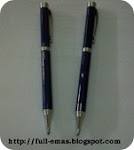Gold Content Testing with XRF: Complete Guide
What is XRF?
XRF or X-ray Fluorescence is a chemical analysis technique used to determine the elemental composition of a material non-destructively. In the context of gold testing, XRF works by emitting X-rays into a gold sample. The interaction between the X-rays and the gold atoms will produce fluorescent X-rays with specific energies that are unique to each element. By analyzing the energy and intensity of these fluorescent X-rays, we can determine the purity of the gold.
Why is XRF Used to Measure Gold Content?
- Fast and Accurate: The XRF testing process is very fast, taking only a few seconds to get results. The high accuracy also makes it a very reliable method.
- Non-Destructive:
Unlike traditional testing methods that often damage samples, XRF leaves no traces on the gold being tested.
- Portable:
Many modern XRF instruments are designed to be portable so they can be taken anywhere for field testing.
- Multi-Element:
In addition to gold, XRF can also detect the presence of other elements that may be present in jewelry or other precious metals.
Testing Process with XRF
- Sample Preparation: The gold sample is cleaned to remove impurities that may interfere with the test results.
- Measurement:
The XRF instrument is directed at the surface of the gold sample. X-rays are emitted and the sensor detects the resulting fluorescent X-rays.
- Data Analysis: Data obtained from the sensor is then processed by software to produce results in the form of a percentage of gold content.
Benefits of Using XRF:
- Speed:
Test results can be obtained within seconds.
- Accuracy:
The test results are very accurate and reliable.
- Ease of Use: Modern XRF instruments are very easy to operate, even by users without a technical background.
- Flexibility:
Can be used for various types of gold samples, both jewelry and bullion.
Limitations of XRF:
- Penetration Depth: XRF can only analyze the surface layer of a sample. For very thick samples, additional analytical techniques may be required.
- Matrix Interference: The presence of other elements in the sample may interfere with the test results.
XRF Applications in Gold Assay:
- Grade Verification: Ensure the gold grade matches what is stated on the label.
- Alloy Detection: Detecting the presence of other metals mixed with gold.
- Secondhand Appraisal: Assessing the resale value of secondhand gold jewelry.
- Quality Control: Ensuring the quality of gold products produced by the jewelry factory.






.jpeg)

![[Most Recent Quotes from www.kitco.com]](http://www.kitconet.com/charts/metals/gold/t24_au_en_usoz_2.gif)






0 Comments:
Post a Comment